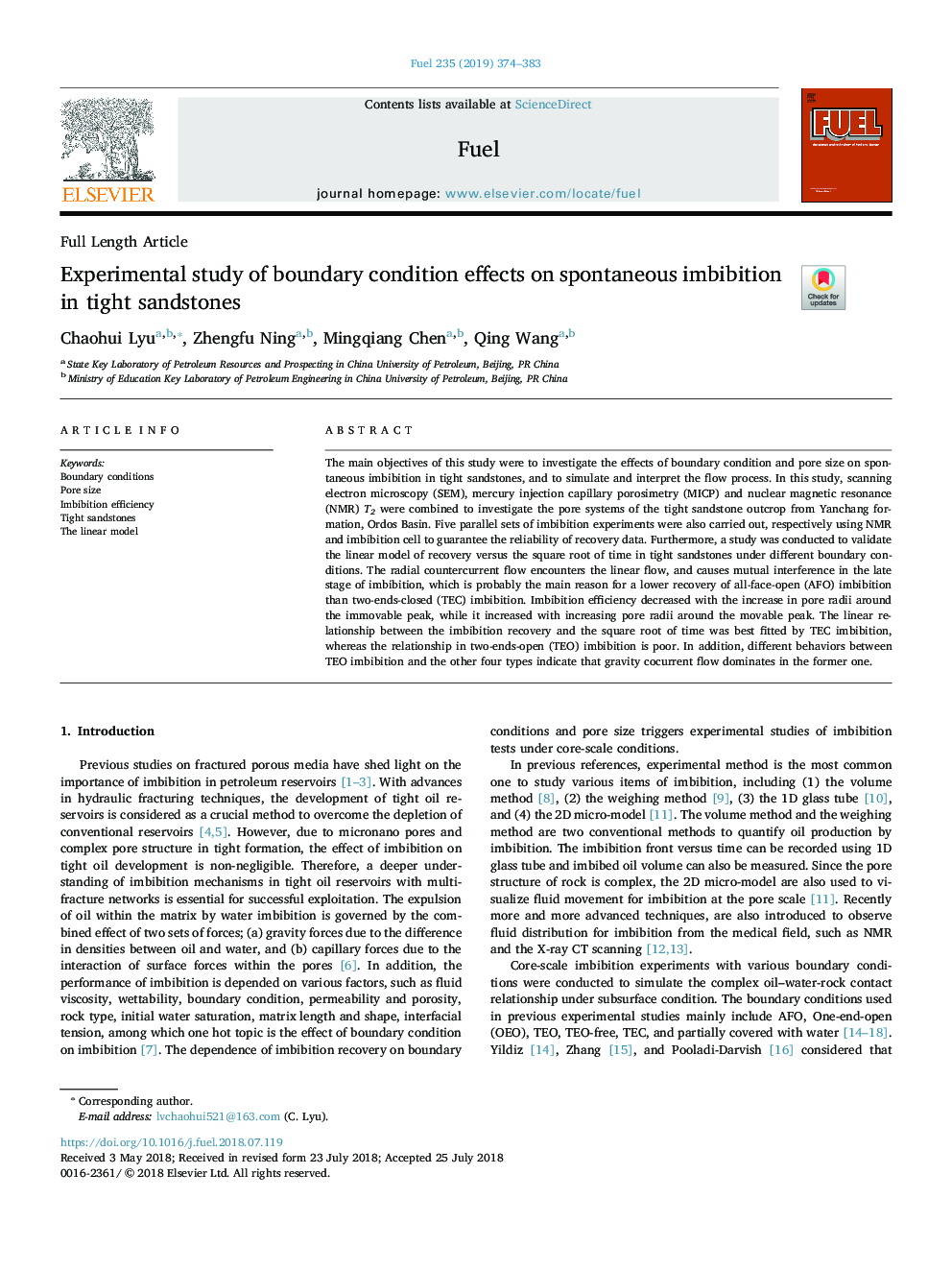| کد مقاله | کد نشریه | سال انتشار | مقاله انگلیسی | نسخه تمام متن |
|---|---|---|---|---|
| 6629930 | 1424929 | 2019 | 10 صفحه PDF | دانلود رایگان |
عنوان انگلیسی مقاله ISI
Experimental study of boundary condition effects on spontaneous imbibition in tight sandstones
ترجمه فارسی عنوان
بررسی تجربی اثرات شرایط مرزی بر جذب خودبهخود در ماسه سنگهای تنگ
دانلود مقاله + سفارش ترجمه
دانلود مقاله ISI انگلیسی
رایگان برای ایرانیان
کلمات کلیدی
شرایط مرزی، اندازه منفذ، بازده جذب، ماسه سنگ تنگ، مدل خطی،
موضوعات مرتبط
مهندسی و علوم پایه
مهندسی شیمی
مهندسی شیمی (عمومی)
چکیده انگلیسی
The main objectives of this study were to investigate the effects of boundary condition and pore size on spontaneous imbibition in tight sandstones, and to simulate and interpret the flow process. In this study, scanning electron microscopy (SEM), mercury injection capillary porosimetry (MICP) and nuclear magnetic resonance (NMR) T2 were combined to investigate the pore systems of the tight sandstone outcrop from Yanchang formation, Ordos Basin. Five parallel sets of imbibition experiments were also carried out, respectively using NMR and imbibition cell to guarantee the reliability of recovery data. Furthermore, a study was conducted to validate the linear model of recovery versus the square root of time in tight sandstones under different boundary conditions. The radial countercurrent flow encounters the linear flow, and causes mutual interference in the late stage of imbibition, which is probably the main reason for a lower recovery of all-face-open (AFO) imbibition than two-ends-closed (TEC) imbibition. Imbibition efficiency decreased with the increase in pore radii around the immovable peak, while it increased with increasing pore radii around the movable peak. The linear relationship between the imbibition recovery and the square root of time was best fitted by TEC imbibition, whereas the relationship in two-ends-open (TEO) imbibition is poor. In addition, different behaviors between TEO imbibition and the other four types indicate that gravity cocurrent flow dominates in the former one.
ناشر
Database: Elsevier - ScienceDirect (ساینس دایرکت)
Journal: Fuel - Volume 235, 1 January 2019, Pages 374-383
Journal: Fuel - Volume 235, 1 January 2019, Pages 374-383
نویسندگان
Chaohui Lyu, Zhengfu Ning, Mingqiang Chen, Qing Wang,
